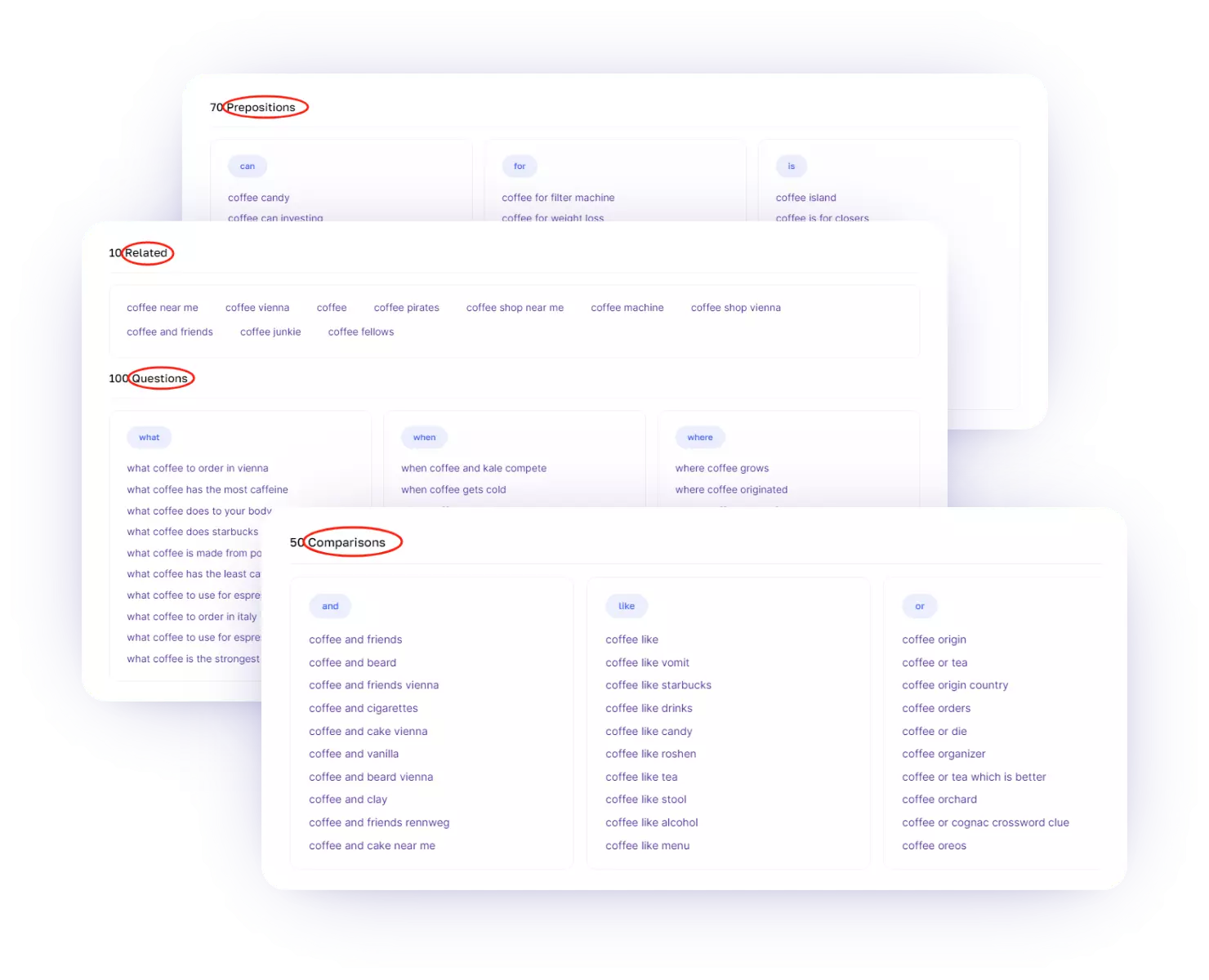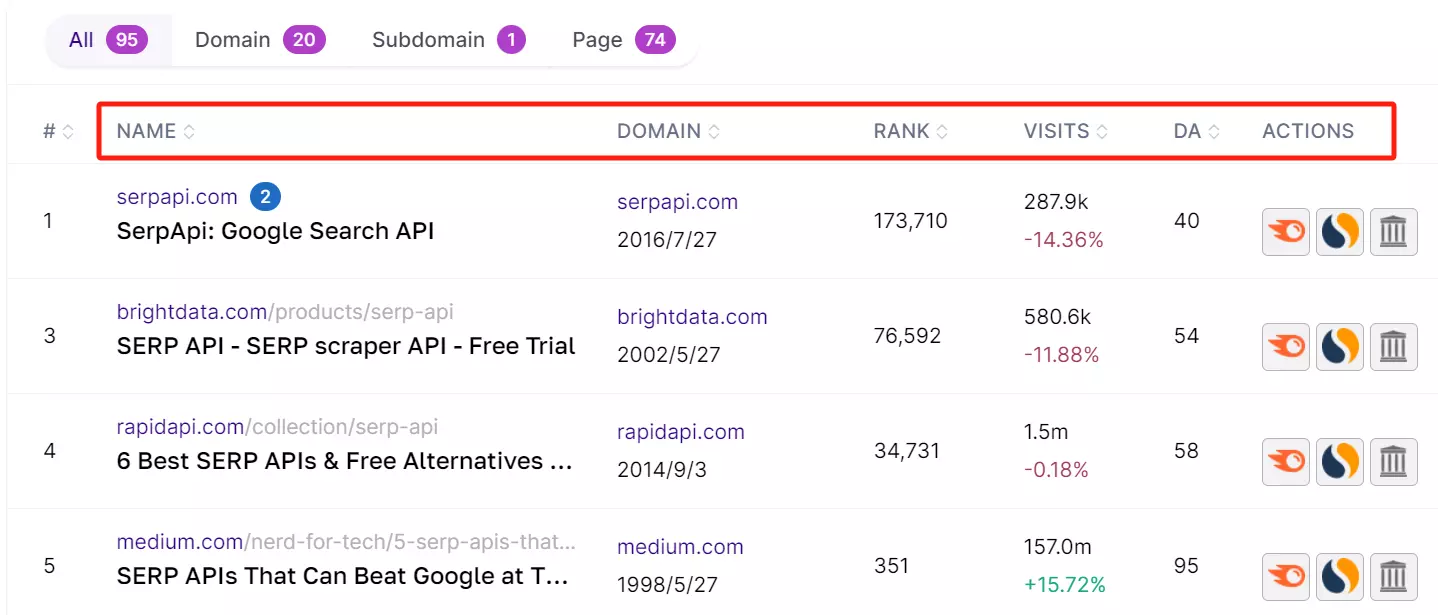
Learning how to find SERP features opportunity can help you rank top!
The competition on search engine results pages (SERPs) has intensified, as SERP features gain heightened visibility and significance for businesses.
This article will guide you on finding SERP feature opportunities using Niche Finder, providing insights into optimizing your website and achieving favorable rankings for these features.
What Does SERP Mean?
SERP, an acronym for Search Engine Results Page, refers to the page presented by search engines such as Google or Bing in response to a user's keyword or phrase inquiry. Typically, the SERP consists of traditional blue links and various additional features designed to promptly satisfy the user's search query.
These SERP features encompass a range of elements, including featured snippets, local packs, news boxes, images, videos, and more.
SEO professionals strategically optimize their content for these features to enhance organic traffic to their websites.
By tailoring content to align with these diverse elements, SEO experts seek to improve visibility and provide users with more immediate and relevant information.
How to Find SERP Features Opportunity?
Let's dive into how to find SERP features opportunity.
Keyword Research and Intent Analysis
To find SERP feature opportunities, one must start with comprehensive keyword research and intent analysis.
Understanding the user's intent behind a search query is essential for aligning content with the most relevant SERP features.
Keyword Generate Tool by Niche Finder can assist in identifying high-volume keywords and uncovering potential niche markets.
As you can see in the below picture, after entering your seed keywords, you will find hundreds of relevant keywords in different categories for inspiration.

Analyzing Competitor SERP Presence
Examining competitors' SERP presence provides valuable insights into existing opportunities within a niche. Identify competitors' ranking for target keywords and analyze the SERP features they occupy.
Understanding the strategies that lead to their inclusion in these features can guide your approach to optimize for similar opportunities.
Keywords Niche allows you to check the top 100 Google search results for multiple keywords in the designated area. With this tool, you can track and monitor your search engine keyword ranking quickly and accurately!

Leveraging Schema Markup
Schema markup is a powerful tool that helps search engines better understand the content on a webpage.
Implementing schema markup, particularly for content types like FAQs, reviews, events, and products, can increase the likelihood of being featured in relevant SERP features.
Structured data not only enhances visibility but also improves the chances of securing rich snippets and other prominent features.
Optimizing for Local SEO
Local businesses can benefit significantly from optimizing for local SEO, as this increases the chances of being featured in Local Packs and Map Packs.
Claiming and optimizing Google My Business listings, encouraging customer reviews, and ensuring consistent business information across online platforms are integral steps in local SEO optimization.
Creating High-Quality and Comprehensive Content
Search engines prioritize content that meets user intent and provides valuable information. Crafting high-quality, comprehensive content that thoroughly answers user queries increases the likelihood of being featured in various SERP features.
Content that aligns with featured snippets, PAA boxes, or Knowledge Graphs stands a better chance of gaining visibility.
Monitoring SERP Changes
SERPs are not static; they continuously evolve based on user behavior, algorithm updates, and other factors.
Regularly monitoring SERP changes using tools like Moz or Google Search Console helps identify new opportunities, track fluctuations, and adapt strategies accordingly.
Using PPC Data
Pay-per-click (PPC) data can offer valuable insights into the performance of specific keywords and their potential to trigger SERP features.
Analyzing PPC campaigns, identifying high-performing keywords, and integrating these insights into organic search strategies can uncover opportunities for feature inclusion.
Capitalizing on Video Content
The increasing prominence of video snippets on SERPs makes video content a valuable asset for digital marketers.
Creating engaging and informative videos, optimizing video content for relevant keywords, and leveraging platforms like YouTube can enhance the chances of being featured in video snippets.
Staying Informed about Industry Trends
The digital landscape is continually evolving, with search engines introducing new features and refining existing ones.
Staying informed about industry trends, attending conferences, and actively participating in digital marketing communities provide a competitive edge in identifying and leveraging emerging SERP feature opportunities.
Conclusion: How to Find SERP Features Opportunity
In conclusion, finding SERP feature opportunities is a multifaceted process that requires a strategic and adaptive approach.
By understanding the diverse array of SERP features, conducting thorough keyword research, analyzing competitor strategies, leveraging schema markup, optimizing for local SEO, creating high-quality content, monitoring SERP changes, utilizing PPC data, capitalizing on video content, and staying informed about industry trends, digital marketers can unlock the full potential of their online visibility.
FAQs About SERP Features
What is SERP?
“SERP'' refers to “search engine results page.” It's a page that a search engine displays to a user after they enter a search query.
What SERP Feature Has the Highest Traffic Potential?
-
Rank 1: Local packs.
-
Rank 2: Sitelinks.
-
Rank 3: Carousels.
-
Rank 4: The “People also ask” (PAA) box.
-
Rank 5: Knowledge graphs.

